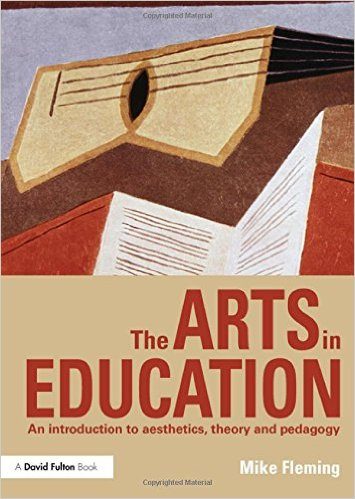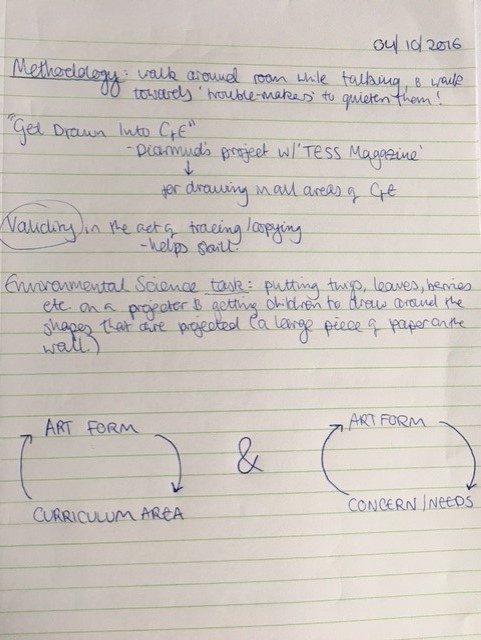
Today we had a guest speaker (Isobel Laird – South Lanarkshire Council) who took us for our morning lecture and for our Art workshop. With her, we learned to use multi-modal approaches while creating art. We used continuous line drawing, watercolours, poster paints, scissors, glue and a ripping technique to create unique pieces of art. I learned that it is good to try things in different ways. I associate paper with carefulness and exactness, as it was always drilled into me to stay in the lines when colouring and to be careful not to stain or rip the page. Pulling away from that and realising it’s okay to rip paper, and even the idea of destroying something (i.e. ripping) to create something else, is a valuable skill that I will carry into the classroom. It’s apparent to me now that the Arts are not a subject where you can avoid mess, and if it’s unavoidable, it may as well be embraced!



Later, in Drama (with Andrew Killen), we learned some new processes/methodologies/concepts, which we are going to go into further next week (and are appropriate for all Primary year groups). We discussed these concepts and tried them, both in the style of being a teacher and being a student. I found this really useful because it helped me get in the shoes of the child and determined areas where I could improve as a teacher, because I could see what needed to be changed from the child’s perspective. This has also helped me greatly as a learner because, as stated in previous blog posts, I have little experience with Drama; learning terminology has been beneficial to me as it helps me consider ideas for the construction of a Drama class.

FOR NEXT WEEK:
I have downloaded Fleming (2012) The Arts in Education to read and will discuss my views and interpretations in a video in a later post.
Fleming, M.(2012) The Arts in Education: An Introduction to Aesthetics, Theory and Pedagogy. London; Routledge
Image found: https://www.amazon.co.uk/Arts-Education-introduction-aesthetics-pedagogy/dp/0415620295








